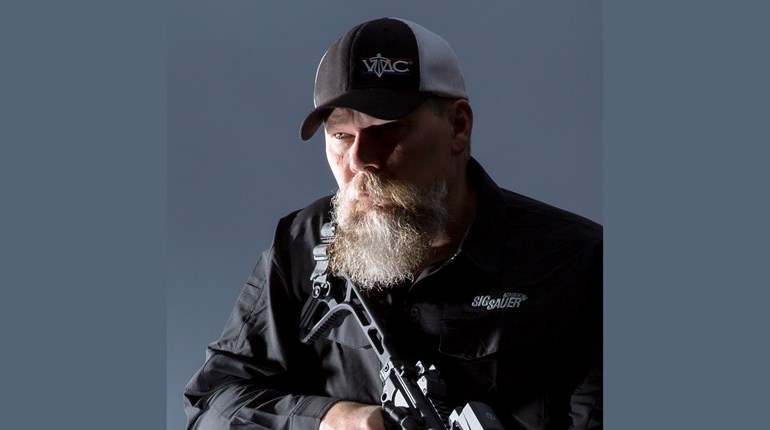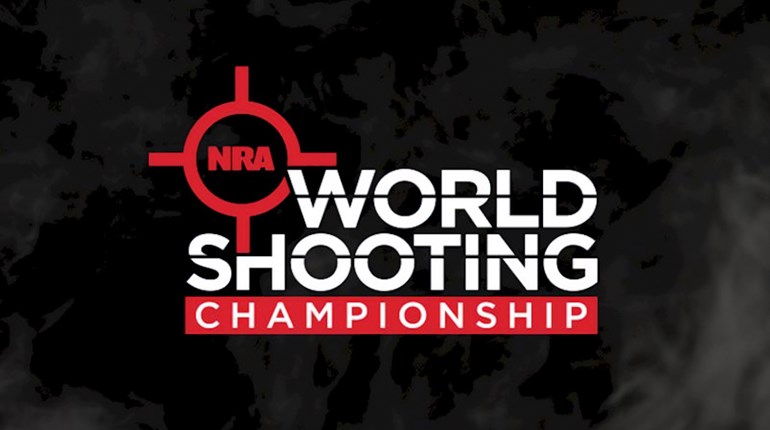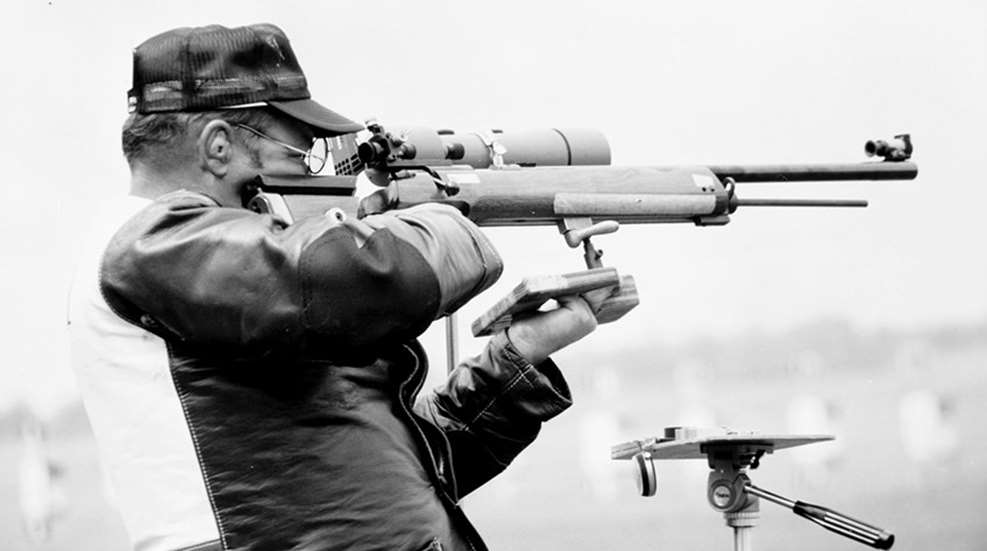
If you haven’t already, be sure to read Part 1, Part 2, Part 3 and Part 4 of this series celebrating the National Smallbore Outdoor Rifle Championship Centenary.
The Smallbore Championship reflected the nation at large and had settled into a comfortable routine during the years of the Eisenhower administration. There was change and progress and prosperity, but it all happened at a slow and measured pace. The targets had not changed for many years and the 6400-point course-of-fire was now five years old. Many of the old faces from the days of pre-World War II Camp Perry were still to be seen—while a new generation of shooters was beginning to make their mark.
Take a look at the first part of a 20-year progression, with highlights from the 1960s—the Golden Age of the Smallbore National Championship.
1960
Of the eight Iron Sight matches at the 1960 Smallbore Championship, Art Cook and Frank Briggs each took three, with Cook grabbing the Metallic Sight Championship and the Hoppe Trophy. Cook did little of note in the Any Sight aggregate, but protected his lead in the Any Sight half to win his second national title.
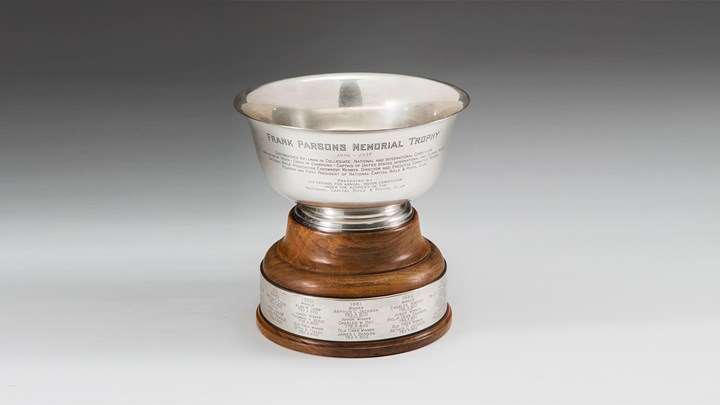
The position matches were pretty much the province of the military. Alan Dapp, a Marine Corps Reserve sergeant, was consistently high enough in the standings of all the individual matches to win the aggregate and the Frank Parsons Trophy.
1961
Excitement was in the air because of the renewal of the Pershing Trophy series.When smallbore shooters arrived at Camp Perry in the second week of August 1961, they found refurbished huts, widened and resurfaced roads, sidewalks and an all-weather parking area immediately behind the ranges.
Just as there were changes in the camp, there were also changes in match format. Prone competition was reduced to a 4800-point aggregate, while the position championship would be decided entirely at 50 yards. Excitement was in the air because of the renewal of the Pershing Trophy series. The international shoulder-to-shoulder match was first shot in England in 1931. World War II interrupted the competition until 1953, when it was placed on an eight-year cycle. Ten British riflemen and supporting officials arrived at Camp Perry eager to shoot the U.S. Championship and regain the trophy from a team that was just as eager to retain it.
The defending national collegiate champion Vic Auer, now shooting for the U.S. Air Force Team, dropped 16 points over the 4800-point grand aggregate to become the new national champion. Janet Friddell captured the woman’s title on her way to a tremendous display of skill in the various international team matches. Friddell had a busy team day having been named to the Randle, Dewar and Pershing Teams! This trifecta was unheard of and Friddell met the challenge. She opened the day with a team high score of 400-29X in the Randle. Shifting her equipment to her point for the Dewar Match she lay down and shot a 388 on the tougher British target—a single point shy of the team high score. After lunch she shot the only perfect score on the Pershing Team, a 400-27X. Her efforts helped the U.S. to win two of the major international matches prone matches, the Randle and the Pershing.
The U.S. Pershing Team was led to victory by two national champions, Captain Rans Triggs and Coach Art Cook. Herb Hollister aided them as team adjutant. Along with Friddell were James Morris, William Grater, Perry veterans Lawrence Wilkens and Ollie Lauderman, three Air Force riflemen Captain Donald Lockstrom, Technical Sergeant Edward Cagle and the freshly minted National Champion Vic Auer. Joe Steffey and George Snellgrove, Jr. rounded out the victorious team, while Roy Oster and Eric Sundstrom stood in reserve.
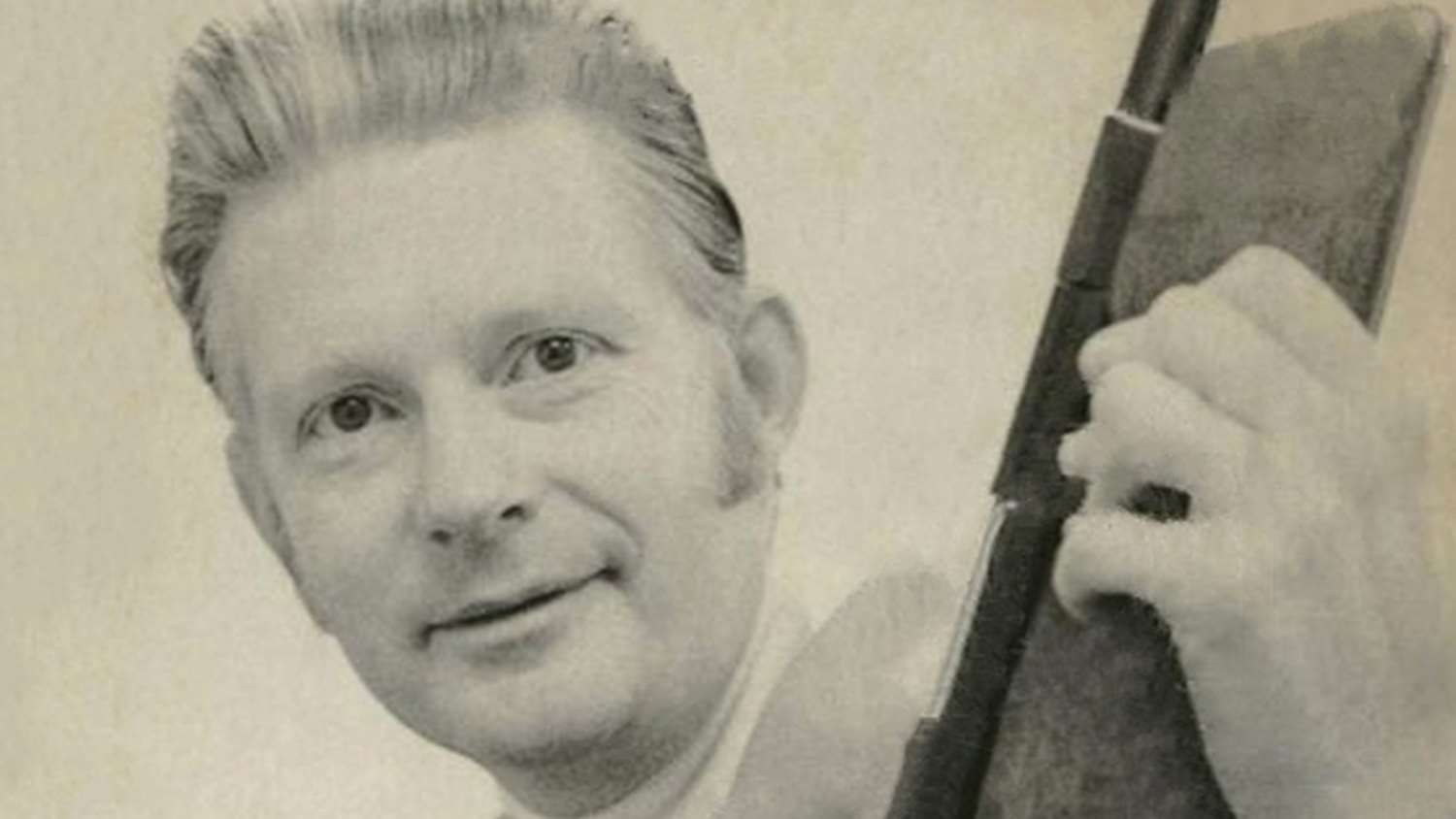
Army Lieutenant Tommy Pool took the position warm-up match and never relinquished the lead. Corporal Gary Anderson set a new Metallic Sight position National Match record of 395-21X, but was unable to pull ahead of his teammate. Pool, who was no slacker, also established a new national position record of 397-22X with Any Sights to wrap up the title.
There were 715 entries in the 1961 smallbore championships and a dramatic increase in the number of juniors. With such an influx of new blood, the future of the game looked bright.
1962
Prone was a 4800 course-of-fire in 1962. After the Metallic Sight aggregate, won by William E. Summers, Lieutenant Pres Kendall, USA, quickly put his mark on the any sight and won the aggregate and the national championship by a one-point margin over Summers.
The contest for the Frank Parson’s Trophy got off to a quick start with Army Captain Daniel Puckel sweeping the two Metallic Sight matches. Lieutenant Barry True, a teammate of Puckel, and junior Phil Bahrman spilt the Any Sight matches. In the end, the slow and steady performance of Tommy Pool put him at the top of the results bulletin.
1963
If there is one certainty in the regular routine of the National Smallbore Matches it is the weather. The wind and the rain, always a threat, swept over the 600 smallbore prone shooters time after time in 1963. Art Cook and Tommy Pool battled it out for the Metallic Sight prone crown, which Cook won, putting him in a good position to win his third prone title. The terrible conditions took its toll, and both Cook and Pool gave way to Rans Triggs who managed to wring out a winning score from the rain-soaked day to take the Any Sight aggregate. In the end, the winner was Lieutenant Lones W. Wigger, Jr., of the Army, who cruised just below the radar and won his first Critchfield Trophy.
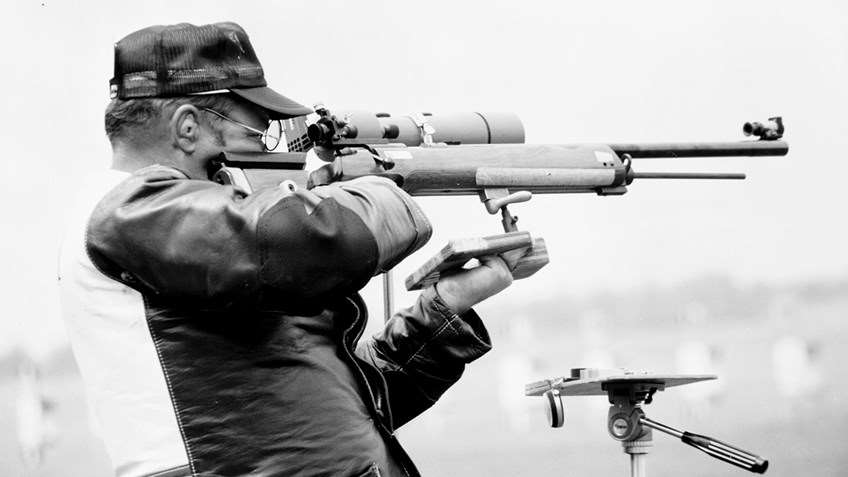
The position championship was a tossup with four riflemen each winning one of the four stages. Captain Verle Wright, USA, took the first Iron Sight match. Conditions wreaked havoc in the second match with Army Lieutenant Don Adams coming up with a winning score. Wigger’s 389-22X in the first Any Sight match reflected the fact that the winds and rain were still a force with which to contend. Sergeant David I. Boyd, II, a left-handed Marine, closed out the championship with an excellent 396-19X. Yet, despite everyone’s best efforts the position title went to the prone champion, Lones Wigger. With this pair of wins, Wigger followed Cook into the record book as only the second person to win both a prone and position championship at Perry and the first to do it on the same year.
1964
Olympian Marine Gunner Jim Hill led off the 1964 prone tournament with a match win, but another Olympian, Jack Foster, took possession of the Hoppe Trophy. Back in the pack, down by five points, was Jim Hill.
Perfection is demanded in scope shooting and near perfection is what Hill delivered across the next four matches. Hill dropped one point as he won the Any Sight aggregate, sewing up the National Championship. Hill was a man of many facets. His victory marked the first time that a National Service Rifle Champion had crossed disciplines and earned a national title in smallbore.
Pres Kendall was as skilled in position shooting as he was at prone and made his move to enter the record books. Without winning a single match, Kendall still managed to pull off an aggregate score that gave him the position crown and opened a page in the record books to him as the third rifleman to win both prone and position championships at Perry.
1965
There was just a little more excitement than usual on the line at Camp Perry in 1965. Echoing the cry of patriot messenger Paul Revere, the prone shooters were warned, “The British are coming!” Armed and ready, just as in 1775, U.S. prone shooters prepared to defend the Pershing Trophy against a pair of determined teams from Great Britain and Canada.
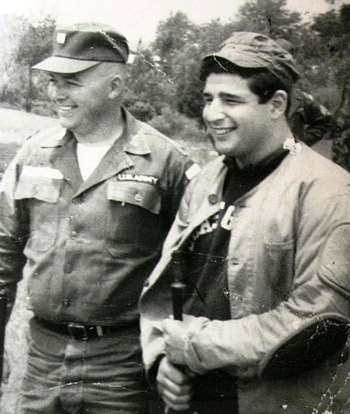
The Pershing Team was built around Army marksmen Captains Jack Foster and Lones Wigger; Lieutenant Don Adams and Specialist Fifth Class Doug A. Knoop of the Reserves. Marine Reserve Captain Frank Briggs and regulars Staff Sergeant Donice “Dumpy” Bartlett and Sergeant Roy Green represented the sea services. Staff Sergeant Charles L. Madden was the sole Air Force shooter. Civilians Kermit Montross and Dean DeLaMater rounded out the team. Krilling and Technical Sergeant Ted McMillion, USAF, were the alternates. Team Captain George Whittington, Coach Herb Hollister and Adjutant Larry Wilkens offered well-seasoned leadership.
The U.S. retained possession of the Pershing Trophy by defeating Great Britain. Wigger shared the highest score with British rifleman Adam Gordon, each posting a 399-24X.
The full potential of the military marksmanship units was felt for the first time in smallbore at Camp Perry. Army Master Sergeant William Krilling, the first person to shoot a 3200 across the old Critchfield course in the days of the 3-pound trigger pull, won the Metallic Sight phase. Precision shooting from Larry Wilkens won the Any Sight aggregate, but Krilling had managed to hold his own and triumphed in the end, taking home the Critchfield Trophy and bragging rights as the National Champion.
The international team matches again displayed the growing power of the military in the shooting disciplines. Of the 20 members of the Dewar Team there were 11 servicemen and eight of the 10 shooters on the U.S. Pershing Team were members of the Army, Air Force or Marines.
The position matches shaped up to be a gold-medal affair shared by Collegiate Champion John Writer who won two of the four matches, one iron sight and one any sight, leaving a single victory each to Olympic champions Lieutenant Gary Anderson, Nebraska National Guard, and Wigger of the Army. In time, Writer would join this elite group when he nailed down his Olympic gold in Munich in 1972. Despite Writer’s outstanding performance, Wigger bested him, joining Art Cook and Jack Foster as shooters with two position wins.
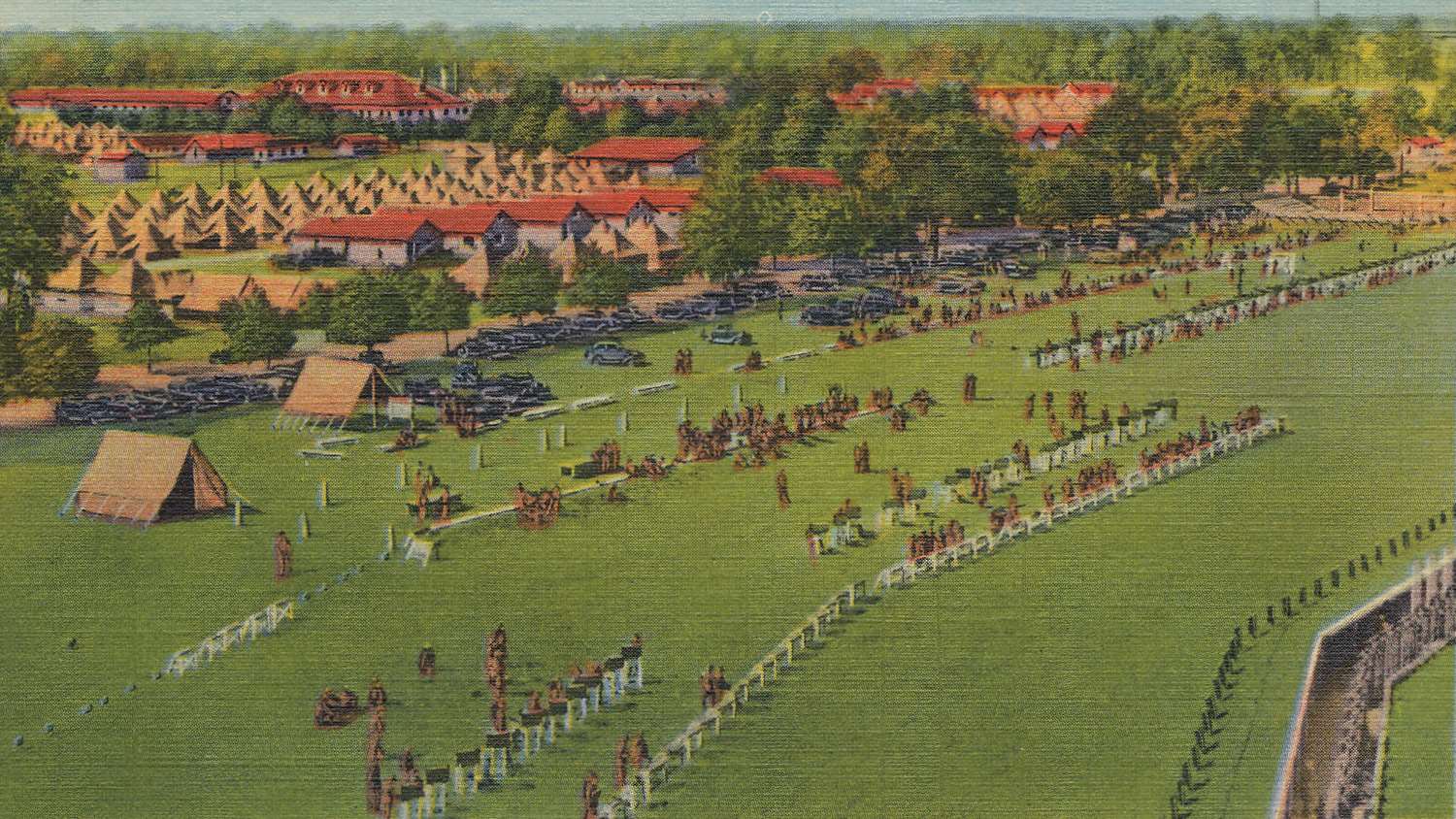
There were over 1,000 entries in the two phases, 661 in prone and 355 in position, and the matches closed on a good note with the future and health of smallbore shooting not in doubt.
1966
There was a certain familiarity to the 1966 National Smallbore Championship. The venue was the same and many of the names were the same, but the prone course-of-fire had reverted to the “Double Critchfield” course last fired in 1960.
The clatter of the adding machines and typewriters in the statistical shack died away as the masters of the second day’s bulletins were slipped into mimeograph machines. As soon as the ink dried, they were hung up for the anxious crowds to see. There was probably no one more anxious than chain-smoking Joe Barnes who learned that he had just run 320 consecutive 10s and 245 Xs for the first ever Perry 3200 iron sight possible.
Fort Benning’s Captain Don Adams, three points behind Barnes, built on the momentum he had from his gold-medal performance in the recent World Championships. Adams lost a point over the final two days, but his 3199-237X gave him the U.S. Cartridge Company Trophy as the Any Sight Champion and it carried him to the National Championship.
There was little doubt that Wigger was going to repeat his 1965 position win. The expanded course-of-fire gave him more opportunity to flex his muscles. Wigger was levered out of a clean sweep by Gary Anderson who won the first Any Sight match. Wigger, perhaps taking umbrage at Anderson’s victory, came back strong, leaving no doubt as to his desire to win as he repeated wining the position title, giving him a record setting three.
1967
The statistical crew, between the prone and position phases, would score close to 600,000 record shots fired in individual and team competition in 1966, an unsung job made for those possessed with great patience, good eye sight and attention to detail. Their skills would be well appreciated, especially by Captain Bruce Meredith, USA, who went nip and tuck with Army Reserve Captain Dave Ross, trimming Ross by two points for the prone championship.
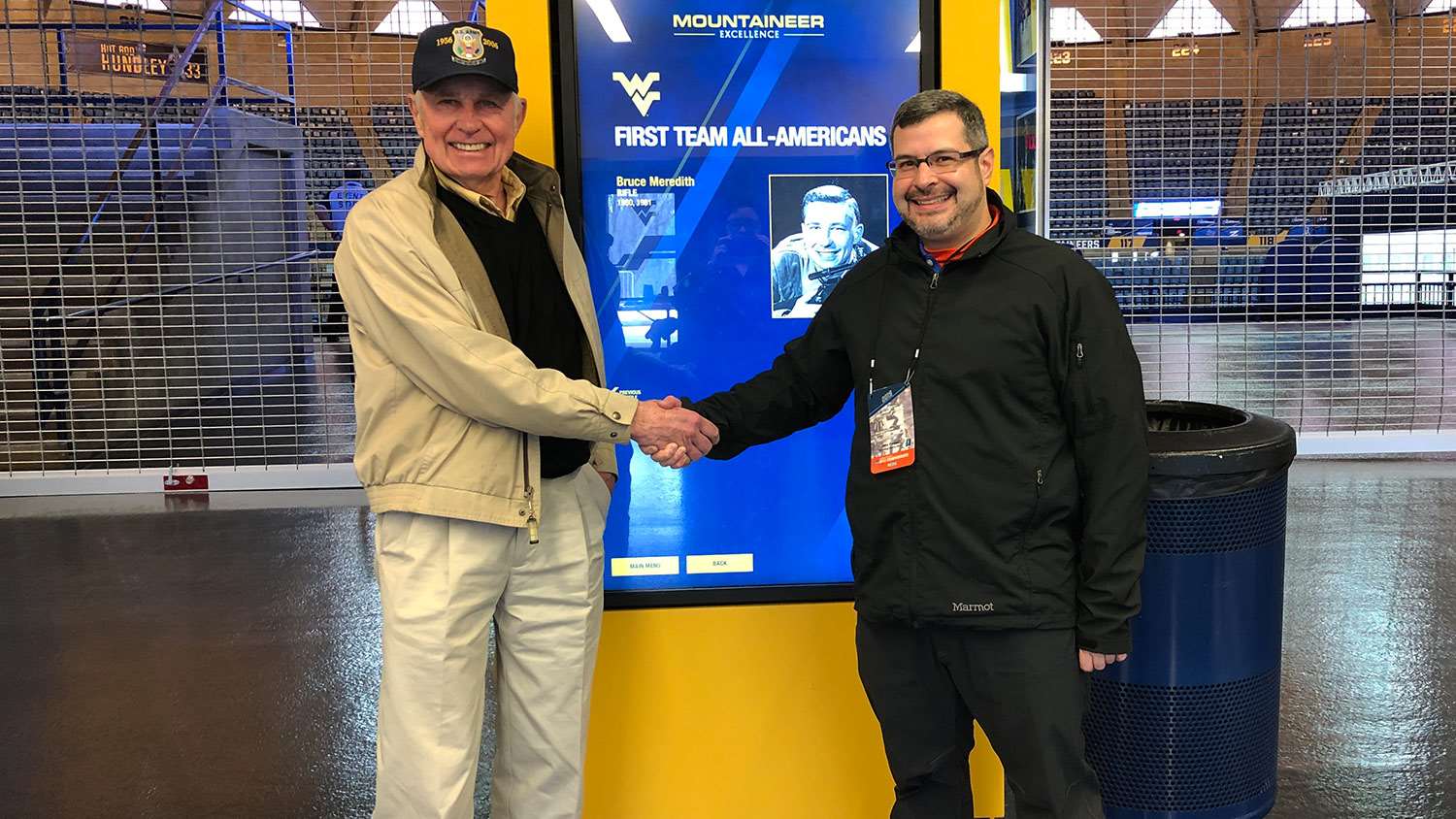
Lones Wigger was serving in Vietnam, but he was scheduled for two weeks of rest and recreation. However, Wigger, being Wigger, cadged a series of flights east and ended up at Camp Perry in time to compete.
Approximately one in six of the prone competitors were from the military, but they accounted for almost half of the individual victories. In addition to Meredith, CWO D. I. Boyd and Lieutenant Ray Green of the Marines, Airman Second Class George “Spike” Hadley, USAF and Army Captains Jack Foster, Lones Wigger, and Army Reservist Dave Ross accounted for the rest. Kim Rickert, Robert Wempe, Douglas Knoop, National Senior Champion Herb Hollister, Metallic Sight Prone Champion Kenneth Leasure and noted gunsmith Karl Kenyon, held up the honor of the civilians. Hollister was the only competitor to shoot a perfect 400-40X in any match, and he did it twice, once in the Any Sight 50 yard and Any Sight 50-meter match.
Wigger had won a single prone match, but earned a spot on the Dewar Team and then fought it out with Gary Anderson, Jack Writer, Jack Foster and Dave Kimes for the position title. It was a heroic effort but, in the end, Anderson emerged as the National Champion in position.
1968
Secretary of the Army Stanley Resor played a Halloween trick on the competitive shooters of the nation when he announced, on October 31, 1967, that the Army would not conduct or support the National Matches in 1968. While the official reason given was economic as the expenditures involved in fighting the war in Vietnam were rising, it was not a realistic claim when one considered the minuscule percentage of the Army’s budget devoted to the National Matches. It was the strongly held belief among the shooting community that anti-gun forces in Congress had, under the subterfuge of economics, brought their weight to bear to end the 65-year-old program. The NRA would not stand for a cancellation of the program and proceeded with plans to conduct the matches on its own.
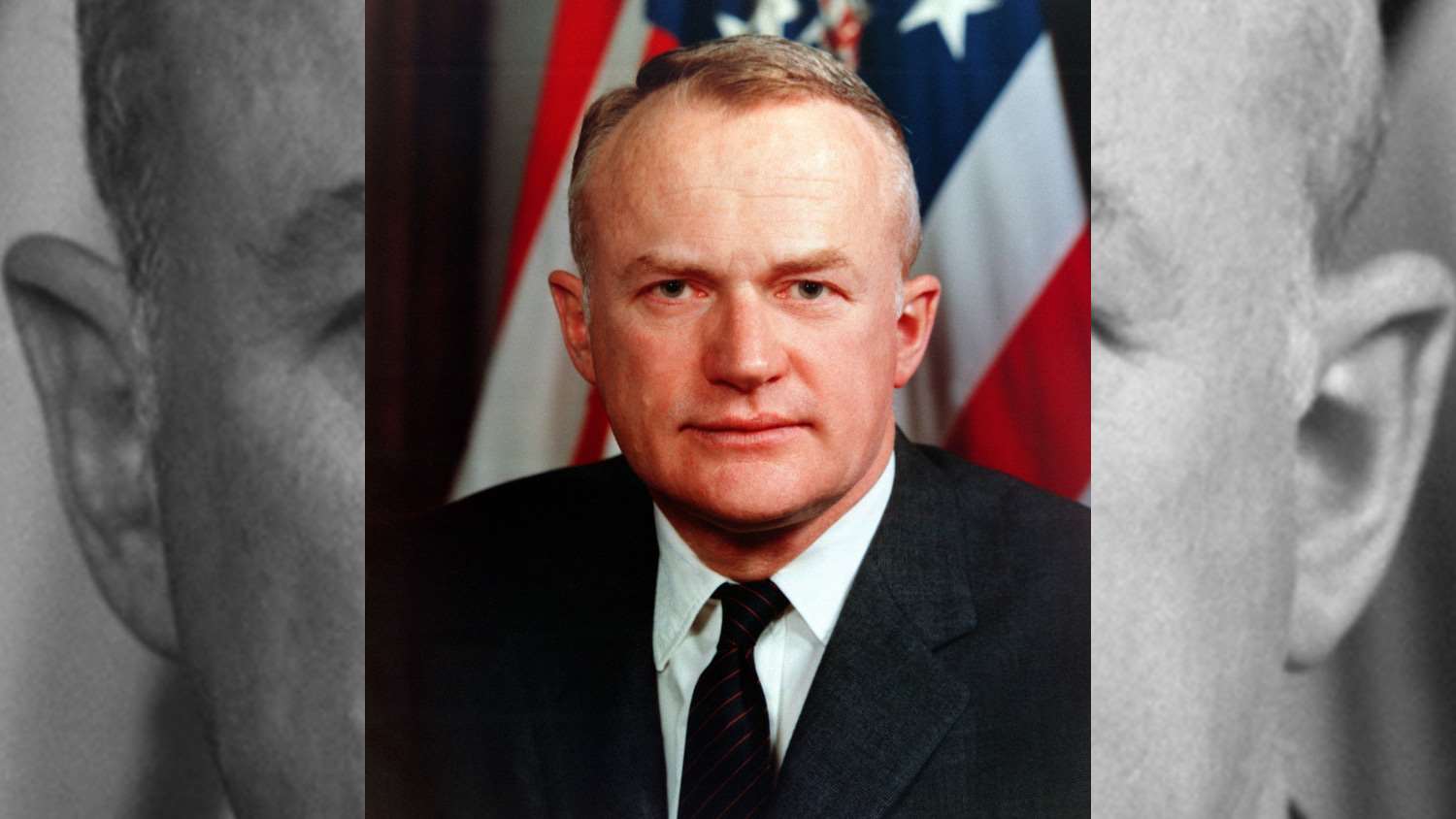
An ad hoc committee comprised of members of the NRA Board of Directors members struggled throughout the winter of 1967 and into the spring of 1968 with the monumental task of mounting a full-scale National Match series without the accustomed financial and logistical support of the Army. They were able to coordinate the effort and resources of the NRA staff, the Ohio National Guard, numerous businesses and citizens of Ottawa County, OH, several hundred volunteers and competitive shooters to hold a successful championship. Of course, the numbers were down dramatically. From a high of 1,118 smallbore entries in 1962, the best year ever, the 1968 field dropped by about a third, to a mere 722. Although there were fewer competitors on the firing line, the level of competition had not diminished.
Tom Whitaker won the Metallic Sight Championship and George Stidworthy won the Any Sight title, but Don Adams regained the prone national title he had last held in 1966. It was a close match in the position championship, and when the smoke had cleared, it seemed that no one was looking at Lones Wigger who quietly won his fourth position title.
The National Matches had weathered the storm of 1968 and began the slow climb upward. With a year of experience under their belts, the volunteers had the situation in hand and the matches ran smoothly. The issues surrounding the 1968 matches were viewed in the light of “what doesn’t kill you only serves to make you stronger.”
1969
Military support, seemingly essential, was not the vital element it was thought to be.After a great start in 1968, Tom Whitaker faltered. That would not be the case for the Air Force Staff Sergeant in 1969. Whitaker managed to capture the title by a two-point margin.
The Army swept the position matches. Wigger lead the charge with a record fifth position title. It was a decade of transition from the traditional Perry of the past to a more streamlined and independent Perry of the future. Military support, seemingly essential, was not the vital element it was thought to be. The reduction in Federal support of 1968 would be a precursor of things to come, just as the NRA’s answer—volunteers—would help keep the program alive and well. So ended the tumultuous 1960s and with the final championship of the decade, Captain Crossman’s smallbore experiment celebrated its 50th anniversary with strong resolve to see another successful 50 years.
Read the next installment of the Smallbore National Championship series here. Also, please check out these previously published articles:













